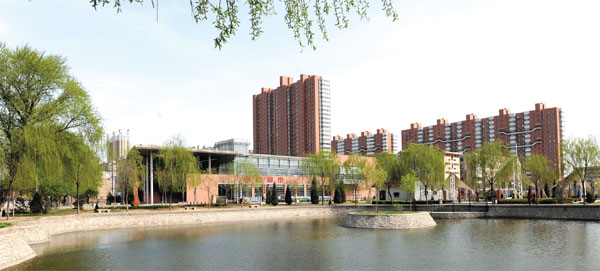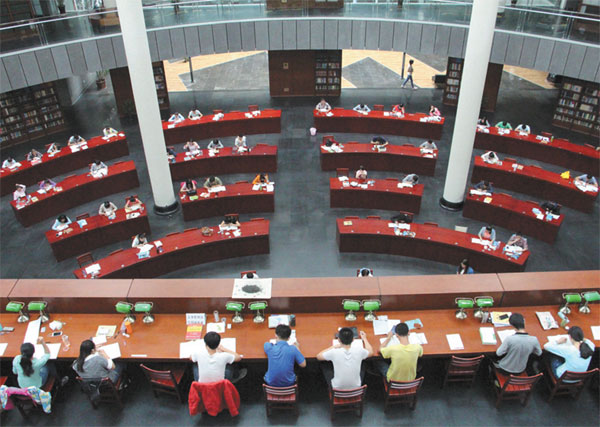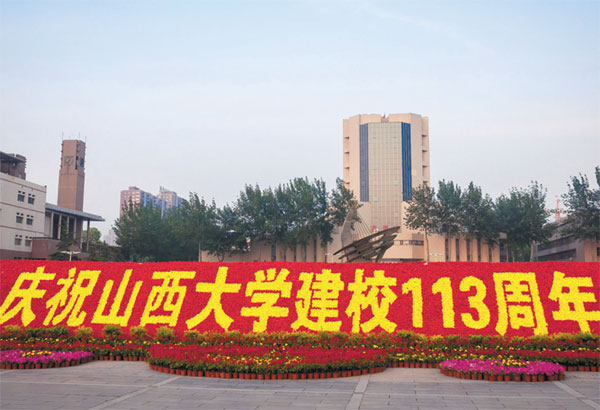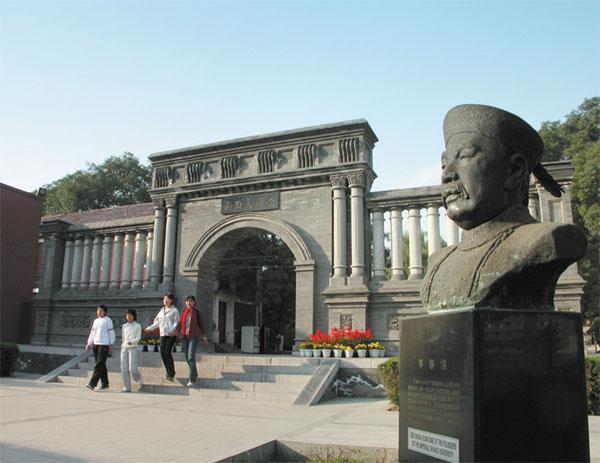Shanxi University extends global influence
Shanxi University has blended the cultures of China and the West since its establishment more than a century ago and is now aiming to extend its global influence.
In 1901, then-Shanxi Governor Cen Chunxuan combined two schools in Taiyuan, the capital of the province, to establish the Shanxi Academy, following an order from the central government of the Qing Dynasty (1644-1911). The following year, another local school founded by Welsh Baptist missionary Timothy Richard was incorporated into the academy.
The new academy, also known as the Imperial University of Shanxi, was the predecessor of today's Shanxi University.
It was one of the three earliest universities set up by the central and local government before the revolution of 1911, the other two being the Imperial University of Peking, now known as Peking University, and Peiyang University, today's Tianjin University.
Chinese and Western studies and translation were taught at the university since it was founded.
The combination of Eastern and Western cultures helped introduce science and modern civilization to China and promoted the reform of the Chinese education system in the early 20th century.
Several top Chinese scholars and educators worked as teachers in the university or gave lectures. Chinese revolutionary pioneer Sun Yat-sen visited the university in September 1912 and gave a speech to thousands of students and local residents in the university's assembly hall.
When British philosopher Bertrand Russell and Indian poet and Nobel laureate Rabindranath Tagore visited China, they also went to Shanxi University.
After the People's Republic of China was founded in 1949, Shanxi University optimized its structure. Some of its departments went to other universities, while some from others came in.
In 2012, the university was enrolled in a national project to improve the capacity of universities in the central and western China regions. The university plans to be among the nation's top universities with global influence by 2052 when it celebrates its 150th anniversary.
The university currently offers 90 undergraduate majors covering 12 academic fields including art, philosophy, science, engineering, agriculture, management and medicine. It also boasts 48 doctorate programs, nine centers for post-doctoral studies, 137 general Masters of Arts and Sciences programs and 16 specialized MA/MS programs.
A number of national key labs and research centers are based in the university.
The Coordinated Innovation Center for Extreme Optics, established in January, is led by Shanxi University and combines joint efforts by Peking University, East China Normal University, Nankai University, Zhejiang University and Xi'an Institute of Optics and Precision Mechanics. With six national key labs, the center has attracted more than 100 of China's top optics experts.
During the past three years, 1,181 theses by teachers and students in Shanxi University have been included in the Science Citation Index, with another 1,300 in the Chinese Social Science Citation Index.
During the same time period teachers and students have won nine provincial science and technology awards.
Many of the university's achievements have turned into products on the market. Shanxi University Hesheng New Materials Inc, a company funded by the university, has been listed on the National Equities Exchange and Quotations, an over-the-counter market for small high-tech companies.
Research teams in the university published three theses in Nature magazine. Visiting professor Joern Manz and his team's findings about vibrational bonding, a newly discovered type of intermolecular bonding, was published in the top chemistry journal Angewandte Chemie International Edition and made the cover of Nature magazine.
Manz is one of 64 top professionals recruited to Shanxi University since 2012, 19 of whom work as full-time professors.
The university started to accept overseas students in 1981, and has so far attracted nearly 4,000 students from 38 countries and regions including the United States, the United Kingdom, Canada, Germany, Japan, Singapore, Russia, Thailand, Hong Kong and Taiwan. Many of them work at embassies, diplomatic agencies, friendship associations and multinational companies.
Contact the writers through zhangzhao@chinadaily.com.cn
|
Shanxi University's attractive campus. Photos Provided to China Daily |
|
Students study in the school library. |
|
Shanxi University celebrates its 113th anniversary in May. It aims to become one of China's top universities with global influence by 2052. Li Mengyuan / for China Daily |
|
The statue of Cen Chunxuan, then chief of Shanxi province, who combined two schools in Taiyuan to establish the Shanxi Academy in 1901. |
(China Daily 05/28/2015 page10)


















